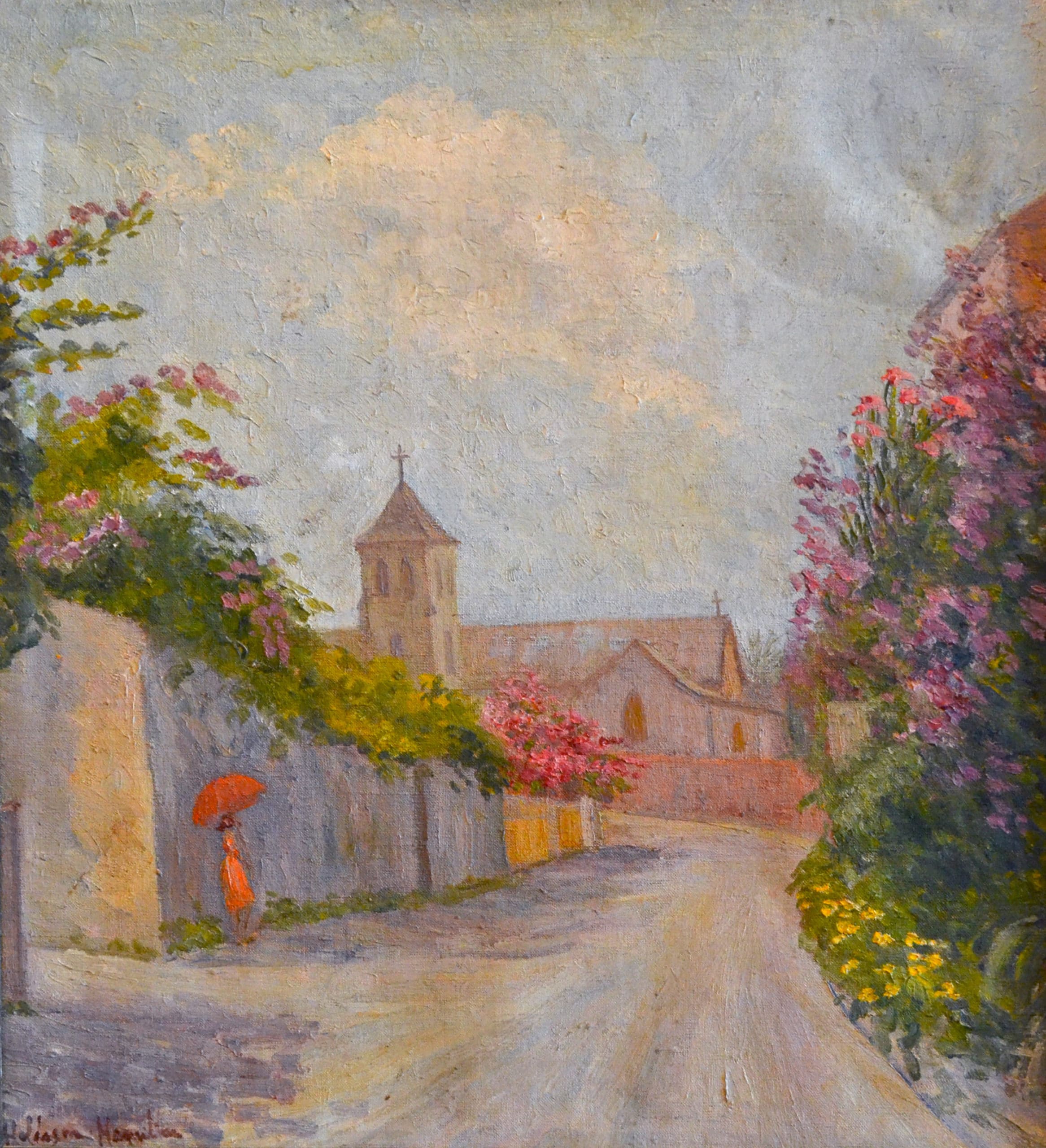
By Natalie Willis
Some visitors aren’t visiting, some are coming home.
Considering the development we know of Nassau today, West Hill Street doesn’t look quite so different today as it does in Hildegarde Hamilton’s works. Though the date is not signed to the painting, we can tell it shows a different Nassau than the one we know now. Just in the last few years West Hill Street has taken on a series of colourful changes, particularly around Graycliff, as part of the Historic Charles Towne group. That being said, it may still be unusual to see a woman walking around with a parasol, the bougainvillea growing wildly over, and the road in better condition–and perhaps even unpaved–than it had been just a few years ago. It’s a comfort to think that maybe potholes haven’t always been quite so treacherous.
Born in 1898 in Syracuse, New York, Hamilton was the daughter of a lecturer, her father Dr James Henry Hamilton, a lecturer at Syracuse University teaching Economics, Sociology and Political Economics. There isn’t much information on her mother other than her sad and sudden passing in 1901 when Hamilton would have only been about three years old. It seemed that she had always lived a bit of a roaming life, living with relatives and attending school in New Jersey and travelling to Geneva and Florence. This travel helped give the young girl the fire she needed to decide to be a painter. But why is she such a fixture for us in Bahamian art?
Hamilton, who would continue to travel throughout her adult life, attended art schools and looked in hall after hall of the best artwork the wider world had to offer. And, eventually, she would begin to spend her summers in Nassau starting in 1946, shortly after separating with her husband. The Caribbean has long been considered a space associated with healing, ever since the region got a “re-branding” of sorts during the wave of colonialism in the 1800s. Britain in particular was framing the Anglo-Caribbean as a respite for pulmonary illness, but the romanticism around the picturesque idyllic landscape was proving to be a healing space for hearts that sought escape as the years went on.
She would become a well known figure in Nassau in those summers. Having always worked as quite a prolific artist, Hamilton would be seen in the streets of downtown Nassau, as well as other Bahamian islands, painting. This practice of working outside, en plein air, would be how we came to know her work best here, but it was also a way to spark the idea in the minds of young Bahamians that fine art could, and indeed should, exist here. Most Bahamians wouldn’t have had access to professional artists working in their studios, many still wouldn’t have been able to see very many finished works outside of hotels or homes. By way of simply having a practice that directly engaged with the lived landscape, Hamilton brought herself into contact with all walks of Bahamian life. This was how she tended to conduct her practice internationally, she didn’t hide herself away, she inserted herself into the places she was painting. This is a key ethical way to practice for artists who are not living in the place they are making work of – this was her way to not just be a “parachute” artist, coming in and taking a few photos and minimizing contact with locals as much as possible.
Hamilton’s presence in the public, painting in the street and making herself accessible, served as part of the inspiration for our first wave of local Bahamian artists taking art seriously. The Burnsides, Eddie Minnis, and a number of others from this generation recall having seen her, easel and palette at the ready, painting scenes of a changing Nassau in oils. There is also a sort of reverence to oil paint, given the long history of oil painting and its subject matter of royalty and religion. To have so many views of Nassau in its decades of change from the late 40’s through to her death in the 70’s provides a record of the culture of our landscape that we don’t always get with photographs. Hamilton used her care to preserve scenes as well as to inspire those coming up. When you have a fire for work like that, it doesn’t go out, it spreads. And thank god it did. Though she visited in summers, the thoughtful romantic renderings don’t just show a visitor, they show someone who made herself at home.
Hamilton’s work is currently on view in the exhibition “Traversing the Picturesque: For Sentimental Value” on view at the National Art Gallery of The Bahamas through July 29th, 2018.